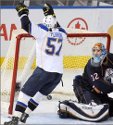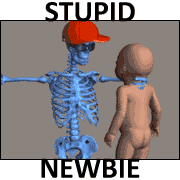|
As I'm sure everyone here knows, education in America isn't the greatest thing. In 2009, a group of 48 states developed the Common Core curriculum aided by encouragement from the Obama Administration. 43 states have now adopted the standard and are implementing it in classrooms. However, despite the inspiring start, it now seems there is nothing but negative news about it, most notably focused on the math instruction. For example, Louis C.K. showed a bunch of problems from his kid's homework which appeared absolute nonsense and got a lot of play in the media. However, the New York Times did an article about the reasoning behind the reform and it's based in solid ideas and methods. The issue appears to be the teachers are just as bad at math as everyone else in the country is, and when presented with new methods are unable to accurately adopt them, resulting in even worse instruction than using the traditional method. http://www.nytimes.com/2014/07/27/magazine/why-do-americans-stink-at-math.html?referrer&_r=0 The New York Times posted:When Akihiko Takahashi was a junior in college in 1978, he was like most of the other students at his university in suburban Tokyo. He had a vague sense of wanting to accomplish something but no clue what that something should be. But that spring he met a man who would become his mentor, and this relationship set the course of his entire career. I'm a mathematician by training and during the entire article all I could think was "this is exactly how we were taught complicated math." The "You", "Y'all", "We" method was basically how all our classroom instruction worked. A question was presented, we came to our own conclusions and then discussed them amongst our selves. We then finished with discussing as an entire class with the professor explaining any gaps in our understanding. We used this to do everything from differential equations to number theory to real analysis. If it works for extremely complicated and subtle ideas, I don't see why it wouldn't work for more basic concepts like "why is 1/3 + 1/2 = 5/6?". The bigger issue is, how do we get buy-in from the schools, parents, administrators, etc. The Japanese guy was able to get everyone on board by basically re-teaching the parents math at the same time he was teaching the children. I think that's a laudable goal but I'm not sure how well it would work here when we have lots of parents using schools as a babysitter. Consider this a thread to discuss education reform, common core, etc.
|
|
|
|

|
| # ? Apr 28, 2024 18:57 |
|
Just going to post an interview with the lead author of the CC standards for math. http://mathbabe.org/2014/02/11/interview-with-bill-mccallum-lead-writer-of-math-common-core/
|
|
|
|
Skeesix posted:Just going to post an interview with the lead author of the CC standards for math. I found this bit very illuminating: the interview posted:Q: OK, but it’s undeniable that CC makes testing easier, do you agree? Moving textbooks away from "everyone gets textbooks made for CA or TX" would do a world of good.
|
|
|
|
As a regular dude, that bit about 'answer-getting' gave me flashbacks to Jr. High and I really like advocated approach. It's like the difference between K - 12 and University was one of learning math in the context of math versus learning math in the context of everything else. I'd liken the difference to learning how to read & write without ever seeing so much as a short story. It wasn't until I was using math for chemistry, biology and statistical analysis that math, as a subject, clicked. Coupling math education to more active engagement would've made all the difference in the world.
|
|
|
|
It's really sad to see teachers like Takahashi because it's the EXACT type of people I want teaching but the focus on tests and other problems stifle them. I'm completely terrible at advanced math and the subject is incredibly dry to me and sometimes I wonder if it was just from the rote way it was taught compared to my History and English classes that were far more engaging and interesting. I remember reading an article that I can't find now that goes into 'of course math is loving boring, it's taught in the most boring way possible instead of teaching it like an art form' and I really agreed with it. Of course it's easier to intimidate teachers to teach to the test or flat out replace them with a TFA gimp so what reason do they have to change? And then all the Very Serious People wonder why education is falling behind.
|
|
|
|
axeil posted:I found this bit very illuminating: They're already doing that because it's a lot cheaper to make textbooks these days. And the common core solution is just "instead of everyone getting textbooks made for Texas it's everyone gets textbooks made for Common Core!"
|
|
|
Stanos posted:It's really sad to see teachers like Takahashi because it's the EXACT type of people I want teaching but the focus on tests and other problems stifle them. I'm completely terrible at advanced math and the subject is incredibly dry to me and sometimes I wonder if it was just from the rote way it was taught compared to my History and English classes that were far more engaging and interesting. I remember reading an article that I can't find now that goes into 'of course math is loving boring, it's taught in the most boring way possible instead of teaching it like an art form' and I really agreed with it. You're probably thinking of A Mathematician's Lament. There are some problems with the article, particularly in how it over-romanticises the subject, but the overall point it makes is good.
|
|
|
|
|
Yep that sure was it, couldn't remember the title to look it up on google.
|
|
|
|
One thing I'm curious about with respect to "falling behind": I heard at one point that America is not really falling behind... When it comes to educating white people. That when you look at the numbers for whites in the US you get something on the order of Norway or Finland but we just do such an execrable job educating minorities that the us looks pretty poor on the numbers. Of course I haven't really looked at the numbers there but I think it was on an NPR program where they were examining how elites in the country want to shake up education and how they're doing so.
|
|
|
|
Skeesix posted:One thing I'm curious about with respect to "falling behind": I heard at one point that America is not really falling behind... When it comes to educating white people. That when you look at the numbers for whites in the US you get something on the order of Norway or Finland but we just do such an execrable job educating minorities that the us looks pretty poor on the numbers. Of course I haven't really looked at the numbers there but I think it was on an NPR program where they were examining how elites in the country want to shake up education and how they're doing so. Yes. code:
|
|
|
|
Yep we really don't have an education problem, we have a failing inner cities problem. One that cannot be solved by looking at education by itself, but rather a multi-pronged approach dealing with the prison system, drug reform, et cetera. Basically a classic intersection problem. Stanos posted:It's really sad to see teachers like Takahashi because it's the EXACT type of people I want teaching but the focus on tests and other problems stifle them. I'm completely terrible at advanced math and the subject is incredibly dry to me and sometimes I wonder if it was just from the rote way it was taught compared to my History and English classes that were far more engaging and interesting. I remember reading an article that I can't find now that goes into 'of course math is loving boring, it's taught in the most boring way possible instead of teaching it like an art form' and I really agreed with it. Do you mean real analysis and beyond? Anyway many people are just going to find math boring and mostly everyone will find the most advanced math incredibly difficult. I found math interesting and the subjects you mentioned to be quite boring so it's most likely just a preference thing anyway. I think I remember reading that article or one like it. The one I read was by the wolfram alpha guy and shocker his suggestion was to use wolfram alpha starting at a young age and stop having kids do anything that could be done with a computer (derivatives integrals, etc. ). I thought his suggestions would be helpful for people that were terrible at math but bad for producing kids that are really good at it. tsa fucked around with this message at 21:57 on Jul 25, 2014 |
|
|
|
Some sites I read concerning education policy are former US Assistant Education Secretary Diane Ravitch and Mercedes Schneider a PHD career educator in New Orleans who does pretty detailed analysis of the funding behind Common Core. Valerie Strauss the Washington post education reporter also has some pretty interesting articles. This one talks about why its somewhat pointless to freak out over comparing national test scores.
|
|
|
|
Really the most glaring problem is that we are just now implementing statistics curriculum into middle school and high school. It will be interesting to see how students who go through those classes compare to their slightly older peers who did not.
|
|
|
|
tsa posted:Really the most glaring problem is that we are just now implementing statistics curriculum into middle school and high school. It will be interesting to see how students who go through those classes compare to their slightly older peers who did not. There's been an optional dedicated class to it for forever and some applications (eg, basic probability) have been part of the algebra curriculum for a while now.
|
|
|
|
This is a tangential question, but I wondered if there are any materials out now for those of us curious about these methods that might want to give them a good try. I feel like I got a lovely math education that followed me all the way through getting an engineering degree. There were a few spots here and there where the stuff was making sense. Say, the precalculus class I had senior year was taught by the math department head, and that person was pretty drat good at actually teaching math. There were a few good spots in the early part of college, but it was poo poo for most of the rest of it. I chalked my problems with math to a general lack of discipline since in a 5-step calculation I'll inevitably bungle it completely, but I'm starting to wonder if I would have benefited from another method. Like, I suspect for other folks that alarm bells start going off when the fuckup arrives, not at the end of two pages of hand calculations when the answer doesn't seem to pan out. That was a major problem for me in college. I'd set everything up correctly, get in a few steps, gently caress up, and follow everything to its illogical conclusion. It only came to me a decade later that, you know, that equal sign means I should be able to smash some numbers in at any time and get the same thing on either side of an equation. I felt like an idiot. Having that stigma over my head made it much harder for any theory to stick, and I feel myself at a loss for fundamentals I feel like I should have. What I understand now is that if you treat math like a technical skill, you're more likely to become proficient in it than if you consider it to be a talent.
|
|
|
|
Xyven posted:You're probably thinking of A Mathematician's Lament. There are some problems with the article, particularly in how it over-romanticises the subject, but the overall point it makes is good. I'm really curious how that's a problem. Could you talk more about it?
|
|
|
|
Bigup DJ posted:I'm really curious how that's a problem. Could you talk more about it? I feel like everyone who "gets" math goes through this thought process when they're exposed to other students who "don't". You see people with a half-page of formulas scrawled on notes. You can tell that their plan (to get a good grade) is to go back over that list of formulas and commit as much to memory as possible. People would be baffled that I'd take no notes, take no "cheat sheets" to tests, and score better than them. I was baffled too, until you start seeing those formulas as what they are: a crutch. A replacement for the natural and true form of mathematics wherein you connect one concept to another by a series of relationships. The "quadratic formula" has no place in a society with computers, but learning or inferring that a quadratic equation produces two roots because it crosses the x axis twice, and that those roots get closer together as the parabola gets "tighter" and further apart as it gets "lower", and seeing the magic of how those two factors come out of the equation. That is an understanding that can't be broken by a flawed human memory. And can be applied without having hard numbers. And you can see that relationship in all sorts of things that happen if you start looking. But as a set formula, it's nothing. It's meaningless. And has to be memorized by rote, and fails at being especially useful even for that.
|
|
|
|
Xyven posted:You're probably thinking of A Mathematician's Lament. There are some problems with the article, particularly in how it over-romanticises the subject, but the overall point it makes is good. As someone who did math competitions throughout childhood, graduated with a degree in mathematics, thought for a long time about being a high school math teacher before abandoning the dream for a better paying career, I can really identify with the article. Mathematics done right is absolutely beautiful. Case in point: Rocko Bonaparte posted:I chalked my problems with math to a general lack of discipline since in a 5-step calculation I'll inevitably bungle it completely, but I'm starting to wonder if I would have benefited from another method. Like, I suspect for other folks that alarm bells start going off when the fuckup arrives, not at the end of two pages of hand calculations when the answer doesn't seem to pan out. That was a major problem for me in college. I'd set everything up correctly, get in a few steps, gently caress up, and follow everything to its illogical conclusion. It only came to me a decade later that, you know, that equal sign means I should be able to smash some numbers in at any time and get the same thing on either side of an equation. I felt like an idiot. There's tons of times where I would be in the middle of a derivation and start turning down a wrong path, but I would stop. Once things started to get complicated, they got ugly, for lack of a better word. With practice, you can absolutely pick out the moment where you've messed up instead of "following everything to its illogical conclusion." It's the same sense you get when you hear an off key note or start a faltering sentence. But you can't build that sense from rote math problems/teaching, because they're usually far too short. You have to be left to flounder around for a page or two so that you can start to build that sense of when things aren't working out. Alternatively, you have to learn to sketch out the major derivation steps in your head that you instinctively sense to be true, and then work out a path from there. You might have encountered the term "lemma" in geometry referring to such bridging steps. Again, without "freeform" derivation/proofs, you'll never build that skill. The thing is that beyond a point, math absolutely gets fun. This was a problem I just thought of yesterday, for which I don't know the answer: You know primes. Sometimes primes come in pairs only two apart, like 11 and 13, or 29 and 31. It's been proven that there are an infinite number of such "twin prime" pairs. But what about primes appearing three apart? Or four apart? Some number n apart? Are there an infinite number of "n prime" pairs for any n? If not, which n's? This is a fun question. The answer isn't immediately obvious to me, although I would suspect it's true for all n based on beauty alone. But that's an example of a fun "adult-level" math question that without a proper comprehensive math education, kids would never be able to experience. fake edit: a bit of googling shows that I was wrong, the number of twin primes is only conjectured to be infinite, but there's strong suspicion that it is. My specific question is called Polignac's conjecture, and was first asked in 1849. Thus far, the best efforts of mathematicians have shown that it is true for at least one number N for N < 246. It remains unanswered. Cool! Cantorsdust fucked around with this message at 05:42 on Jul 26, 2014 |
|
|
|
ikanreed posted:I feel like everyone who "gets" math goes through this thought process when they're exposed to other students who "don't". You see people with a half-page of formulas scrawled on notes. You can tell that their plan (to get a good grade) is to go back over that list of formulas and commit as much to memory as possible. Oh yeah I agree completely! I'm asking what the problem is with it "over-romanticising" the subject, and more importantly how he came to that conclusion in the first place. He was using it as a pejorative and I'm curious why. Edit: For the record though I don't agree that it over-romanticises maths, or that there is such a thing as over-romanticisation unless it's papering over something which has the potential to do serious harm to people. Bigup DJ fucked around with this message at 06:00 on Jul 26, 2014 |
|
|
|
Cantorsdust posted:There's tons of times where I would be in the middle of a derivation and start turning down a wrong path, but I would stop. Once things started to get complicated, they got ugly, for lack of a better word. With practice, you can absolutely pick out the moment where you've messed up instead of "following everything to its illogical conclusion." It's the same sense you get when you hear an off key note or start a faltering sentence. But you can't build that sense from rote math problems/teaching, because they're usually far too short. You have to be left to flounder around for a page or two so that you can start to build that sense of when things aren't working out. This is why I think I always seemed to learn math better when we were doing a proof by contradiction. The goal was to get an answer that didn't make any sense. My abstract math professor was always amused that my strategy was usually to prove why something couldn't be a, b or c and therefor had to be the only remaining option, d. It all seemed very Sherlock Holmes to him. In that vein, math is just solving lots of really neat puzzles and mysteries. If we taught math that way I think kids would be way more interested. Everyone likes solving puzzles, and even more people like solving puzzles and knowing they got the correct answer. That seems way more satisfying to me than "you did this algorithm correctly." Cantorsdust posted:You know primes. Sometimes primes come in pairs only two apart, like 11 and 13, or 29 and 31. It's been proven that there are an infinite number of such "twin prime" pairs. But what about primes appearing three apart? Or four apart? Some number n apart? Are there an infinite number of "n prime" pairs for any n? If not, which n's? Related to this, there's the story of the math professor writing an unsolved problem on the board in class and a student arriving late and thinking it was part of an assignment. He ends up solving it and using it as his Ph.D thesis. That, to me, is what math is all about. I don't think we can give grade school kids that sort of stuff, but even in undergrad we did our own research about obscure areas of math (the boolean lattice and weird number theory things) which made it extremely exciting anytime we found something, since we were reasonably sure we were first. If we gave grade school kids that same sense of elation when they have "Aha!" moments it'd make math much more interesting. axeil fucked around with this message at 06:01 on Jul 26, 2014 |
|
|
|
Cantorsdust posted:You know primes. Sometimes primes come in pairs only two apart, like 11 and 13, or 29 and 31. It's been proven that there are an infinite number of such "twin prime" pairs. But what about primes appearing three apart? Or four apart? Some number n apart? Are there an infinite number of "n prime" pairs for any n? If not, which n's? I'm pretty sure number theory is something that makes people go crazy. Not everybody, but the entire subject area is a minefield of whoa relationships and interconnections. Even really simple things like φ(n) are just weird. Maybe it's just that I personally am borderline nuts.
|
|
|
|
emfive posted:I'm pretty sure number theory is something that makes people go crazy. Not everybody, but the entire subject area is a minefield of whoa relationships and interconnections. Even really simple things like φ(n) are just weird. Best in class demo we ever did in any class, not just math, was my number theory class where we broke RSA by hand. We took a 4 (or maybe 8? or 6?) digit semi-prime and walked through how effectively factoring that number would allow you to decode information. That was mind-blowing. And I suppose it would've been illegal 20 years ago when cryptography was considered a munition.
|
|
|
|
Cantorsdust posted:As someone who did math competitions throughout childhood, graduated with a degree in mathematics, thought for a long time about being a high school math teacher before abandoning the dream for a better paying career, I can really identify with the article. Mathematics done right is absolutely beautiful. Case in point: That's kind of neat that you happened upon this one since there was no n it was known for until last year when it was uncovered by a guy who was not a professor but instead an adjunct teacher in New Hampshire. As far as crypto as....munitions... OP, did you grow up in Soviet Russia or something? RSA has the name because it was discovered by academics and is now the base for the entire online transaction system of the internet.
|
|
|
|
Skeesix posted:As far as crypto as....munitions... OP, did you grow up in Soviet Russia or something? RSA has the name because it was discovered by academics and is now the base for the entire online transaction system of the internet. What does Rivest, Shamir and Adleman have to do with the US considering crypto to be a munition?
|
|
|
|
Yeah, wiki summary of the subject here if you're not old enough to remember Netscape 3. 
|
|
|
|
computer parts posted:There's been an optional dedicated class to it for forever and some applications (eg, basic probability) have been part of the algebra curriculum for a while now. There's a new curriculum in the pipeline. The current state of affairs is woefully inadequate for how important of a subject it is becoming in nearly every branch of science and beyond. Cantorsdust posted:
I think that's fun, but I'm a math guy. I'd guess a lot of kids would find that just as boring as any other math thing. Actually I know most would because I try those fun things from time to time. At the end of the day math is a very abstract topic and there's going to be a lot of people who either don't get it or aren't interested in abstract things like that. Much like abstract art isn't a lot of people's cup of tea.
|
|
|
|
axeil posted:And I suppose it would've been illegal 20 years ago when cryptography was considered a munition. It's still fairly restricted. If you distribute a program containing certain sorts of cryptography from the US, or from a server based in the US (like, oh, all the servers for Google Play and the Apple App Store), you need to get an export license from the US government. This includes the use of things as trivial and common as HTTPS, it appears.
|
|
|
Bigup DJ posted:Oh yeah I agree completely! I'm asking what the problem is with it "over-romanticising" the subject, and more importantly how he came to that conclusion in the first place. He was using it as a pejorative and I'm curious why. It's the same reason it's a problem to over-romanticize anything, it obscures the truth and replaces facts with dreams. The fact is, for most people math is just going to be a tool they use, and pretending that it's not is just naive. The article draws comparisons between art and math, and while there is an element of expression in proofs, proving theorems isn't what math is used for by the vast majority of the population. The analogy to art is fallacious because art is not the fundamental backbone to all the science and technology that drives the modern world. You cannot treat math the same as art, because while someone who does not understand or appreciate art is only missing out on some aspects of culture, someone who does not understand math cannot fully function in society. Another problem with romanticising math is that, frankly, a lot of it is drudgery. It is EXTREMELY important to keep track of all the little details when you are doing a proof or deriving an equation, and a missed term or forgotten minus sign can completely change your result. In many advanced subjects of math, such as analysis, differential equations, probability/measure theory, your work is 99% manipulating equations and keeping track of fiddly little details and 1% finding a neat trick that makes a proof work. Right now our education system basically focuses solely on those little details, but Lockheart's article leaves non-mathematicians with the impression that they should be ignored almost entirely. In reality these details should be a large part of math education, although not to the exclusion of all else. And again, I do not disagree with the primary point of the article, I just think that he presents an unrealistic picture of a subject that is often dull and tedious.
|
|
|
|
|
Figured it might be relevant: Jacobin has an article about the failure of the charter school experiment in New Orleans. It's got the same sort of soul-grinding factory method of education mentioned above:quote:This curriculum was delivered almost exclusively through direct instruction — what TFA corps members refer to as the “five step lesson plan,” and educator and philosopher Paulo Freire calls “banking education,” wherein students are treated as passive and empty receptacles into which information can be deposited. In nearly every lesson Sondel observed, teachers stood in front of students to introduce new content or an isolated skill, after which students were asked to parrot, practice, and then perform their newly acquired knowledge on worksheets and multiple-choice assessments. There were no student debates, projects, or science experiments. I think "behaviour intervention room" is one of the most Orwellian things I've read this year. I can't believe this actually exists.
|
|
|
|
Jesus Christ, what are they trying to do: make it the most like a prison that it can possibly be?
|
|
|
|
PT6A posted:Jesus Christ, what are they trying to do: make it the most like a prison that it can possibly be? Factories. They're being run as businesses, producing the commodity of workers. That's the simplest way of putting it. Not coincidentally, the most "efficient" way of producing a worker is also the one which most mangles the human spirit.
|
|
|
|
Xyven posted:It's the same reason it's a problem to over-romanticize anything, it obscures the truth and replaces facts with dreams. The fact is, for most people math is just going to be a tool they use, and pretending that it's not is just naive. The article draws comparisons between art and math, and while there is an element of expression in proofs, proving theorems isn't what math is used for by the vast majority of the population. The analogy to art is fallacious because art is not the fundamental backbone to all the science and technology that drives the modern world. You cannot treat math the same as art, because while someone who does not understand or appreciate art is only missing out on some aspects of culture, someone who does not understand math cannot fully function in society. The thing is, math isn't needed as just a tool to use for the vast majority of people. We have calculators, computers, google, etc to fill the role of that. There's no reason to make basic arithmetic the core focus of a math curriculum. It would be like saying "the vast majority of people use art for making sketches to explain something in a lecture or presentation, so let's remake the art curriculum to focus on mastering the quick sketch." Also, with math, the two goals of high level concepts and low level arithmetic are not mutually exclusive. The low level arithmetic is exclusively derived from the high level concepts, and starting with the concepts first can help to explain the arithmetic. Adding is just iterated counting. Multiplication is just iterated adding. Exponents are just iterated multiplication. And more exotic operations can be described iterating on that, etc. A more concrete example: you probably memorized a bunch of equations for distance/speed/acceleration in your high school physics class. Before calculus, these equations might have seemed arbitrary, but once you learned calculus, you saw the connection between them: speed is the derivative of distance, acceleration is the derivative of speed, jerk the derivative of acceleration, etc. And suddenly, you didn't even need to memorize the equations anymore! You now understood why they were what they were, and you could rederive them if necessary. And loving lol at advanced math being 99% manipulating equations and keeping track of fiddly little details and just 1% being the neat trick that makes the proof. On paper, maybe, but that 1% neat trick is the core of the proof and will take up the majority of the time to come up with. The equations are just writing down the argument you're making in your head. I can't tell you the number of times where I would make some sign error or something, get halfway through the derivation, and realize the sign is opposite what I want. But instead of accepting the arithmetic blindly, my sense of mathematics/aesthetics would tell me to backup and find the mistake somewhere, because what I've derived has to be right, it's just the arithmetic that's wrong. This statement is as absurd as saying that writing a story is 99% using a pen to make words and 1% coming up with characters and a plot. Anyone who's done high level math would tell you otherwise. Lockheart is telling non-mathematicians that those aspects can be ignored almost entirely because most mathematicians ignore those aspects almost entirely. Seriously, university math professors are hilariously forgetful and error-prone sometimes. That's why poo poo like Matlab / Mathematica / Wolfram Alpha exist. Let computers handle the bookkeeping, as they should. You can argue, "but what about the engineers and scientists who are using math instead of playing with it?" Well, that's what computers are for. And before computers, that's what sine tables and slide rules were for. I cannot think of a single example in all of history where a scientist, engineer, or mathematician became known for their amazing skill in arithmetic. But I can remember Gauss as a schoolboy discovering that the sum of a series of consecutive integers from 1 to n equals n(n+1)/2. There's a reason people automated the process of arithmetic and focused on the high level stuff instead. Arithmetic is perfect for a computer: it requires perfect accuracy but no thought. So why are we making children focus on arithmetic instead of math? edit: I guess what I'm arguing is that math is fundamentally closer to being an art or a language as it is a science. It needs to be taught like an art or a language. Cantorsdust fucked around with this message at 17:48 on Jul 26, 2014 |
|
|
Cantorsdust posted:Arithmetic is perfect for a computer: it requires perfect accuracy but no thought. So why are we making children focus on arithmetic instead of math?
|
|
|
|
|
Cantorsdust posted:It would be like saying "the vast majority of people use art for making sketches to explain something in a lecture or presentation, so let's remake the art curriculum to focus on mastering the quick sketch." I, for one, would expect to see good value from courses designed to help children create effective visual representations of their ideas.
|
|
|
|
Bel Shazar posted:I, for one, would expect to see good value from courses designed to help children create effective visual representations of their ideas. They'd be taught on Visio if anything.
|
|
|
|
Sadly true...
|
|
|
|
The teachers in my family are convinced common core is just an elaborate way to close down public schools and gut the teacher's unions so we can have non-union charter schools. Maybe someone who knows more about it can say whether this is at all accurate or not.
|
|
|
Cantorsdust posted:The thing is, math isn't needed as just a tool to use for the vast majority of people. We have calculators, computers, google, etc to fill the role of that. There's no reason to make basic arithmetic the core focus of a math curriculum. It would be like saying "the vast majority of people use art for making sketches to explain something in a lecture or presentation, so let's remake the art curriculum to focus on mastering the quick sketch." Understanding that 1/4 < 1/3 is using math as a tool, understanding how to estimate a 15% tip is using math as a tool, looking at a result that your excel spreadsheet spits out at work and realizing it is off by several orders of magnitude is using math as a tool. There are things that you need to be able to do without a calculator in order to function. And again, the analogy between math and art is terrible, because while art is neat, it is not the underlying mechanic for all of modern science and technology. Cantorsdust posted:And loving lol at advanced math being 99% manipulating equations and keeping track of fiddly little details and just 1% being the neat trick that makes the proof. On paper, maybe, but that 1% neat trick is the core of the proof and will take up the majority of the time to come up with. The equations are just writing down the argument you're making in your head. I can't tell you the number of times where I would make some sign error or something, get halfway through the derivation, and realize the sign is opposite what I want. But instead of accepting the arithmetic blindly, my sense of mathematics/aesthetics would tell me to backup and find the mistake somewhere, because what I've derived has to be right, it's just the arithmetic that's wrong. This statement is as absurd as saying that writing a story is 99% using a pen to make words and 1% coming up with characters and a plot. Anyone who's done high level math would tell you otherwise. Lockheart is telling non-mathematicians that those aspects can be ignored almost entirely because most mathematicians ignore those aspects almost entirely. Seriously, university math professors are hilariously forgetful and error-prone sometimes. That's why poo poo like Matlab / Mathematica / Wolfram Alpha exist. Let computers handle the bookkeeping, as they should. Writing IS 99% sitting down and putting words on paper, making sure they flow, making sure they all fit. You appeal to your sense of mathematics to recognize when something is wrong without acknowledging where that intuition came from. It comes from a strong understanding of arithmetic and algebraic manipulation that you built up over years of paying close attention to details while doing problems. Cantorsdust posted:You can argue, "but what about the engineers and scientists who are using math instead of playing with it?" Well, that's what computers are for. And before computers, that's what sine tables and slide rules were for. I cannot think of a single example in all of history where a scientist, engineer, or mathematician became known for their amazing skill in arithmetic. But I can remember Gauss as a schoolboy discovering that the sum of a series of consecutive integers from 1 to n equals n(n+1)/2. There's a reason people automated the process of arithmetic and focused on the high level stuff instead. Arithmetic is perfect for a computer: it requires perfect accuracy but no thought. So why are we making children focus on arithmetic instead of math? If you do not have a strong understanding of what the computer is doing, you will be unable to recognize when it spits out clearly nonsensical results. There are also countless examples of times where sitting down and using a computer to do a simple calculation or double check something is a ludicrous waste of time. Nobody is remembered for their amazing skill in arithmetic because it is a prerequisite for further accomplishments. Neither are authors remembered for their great spelling abilities. It's just that you need a solid foundation in order to build up more advanced ideas. Understanding arithmetic is like knowing how to spell; it is something you need to know in order to be a functional human being. I'm sure that math as seen from the eyes of a research mathematician really closely resembles art, but this is the minority view of a fraction of a percentage of the population. Chemists could also describe what they do as close to an art, but it doesn't matter because for most people chemistry is a tool. Math is similar to art in some ways, but that does not mean that math is an art, any more than two sets containing the same object implies that they are both the same set. Let me reiterate that I am not saying there is no room for creativity and expression in math, or that it should be completely ignored. I am saying that Lockheart presents an unrealistic view of math because he has the viewpoint of a research mathematician.
|
|
|
|
|
the boston bomber posted:The teachers in my family are convinced common core is just an elaborate way to close down public schools and gut the teacher's unions so we can have non-union charter schools. Maybe someone who knows more about it can say whether this is at all accurate or not. That is the goal of the people implementing it, as the nyt article says it isn't the goal of the authors.
|
|
|
|

|
| # ? Apr 28, 2024 18:57 |
|
drat that sucks. I mean I guess the authors are well-intentioned? They are still breaking a working system for some people who hate unions and hate having to pay teachers a fair amount with reasonable security.
|
|
|



























